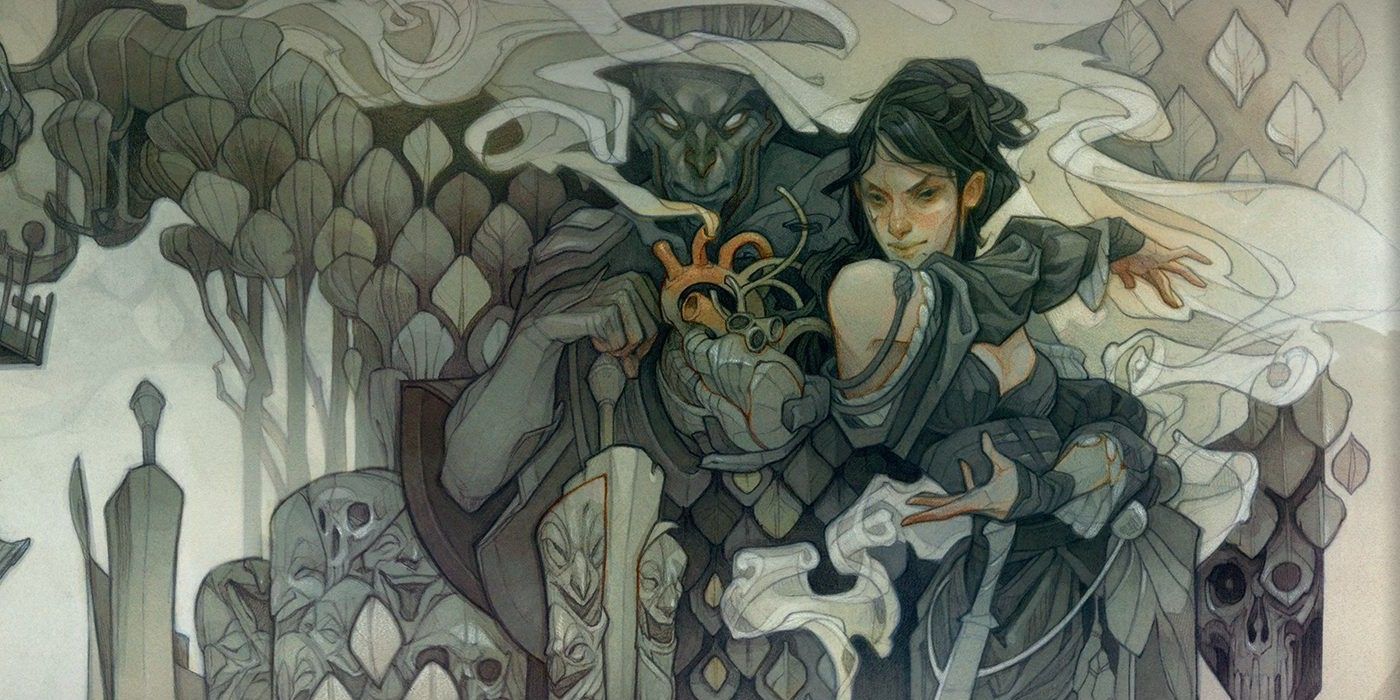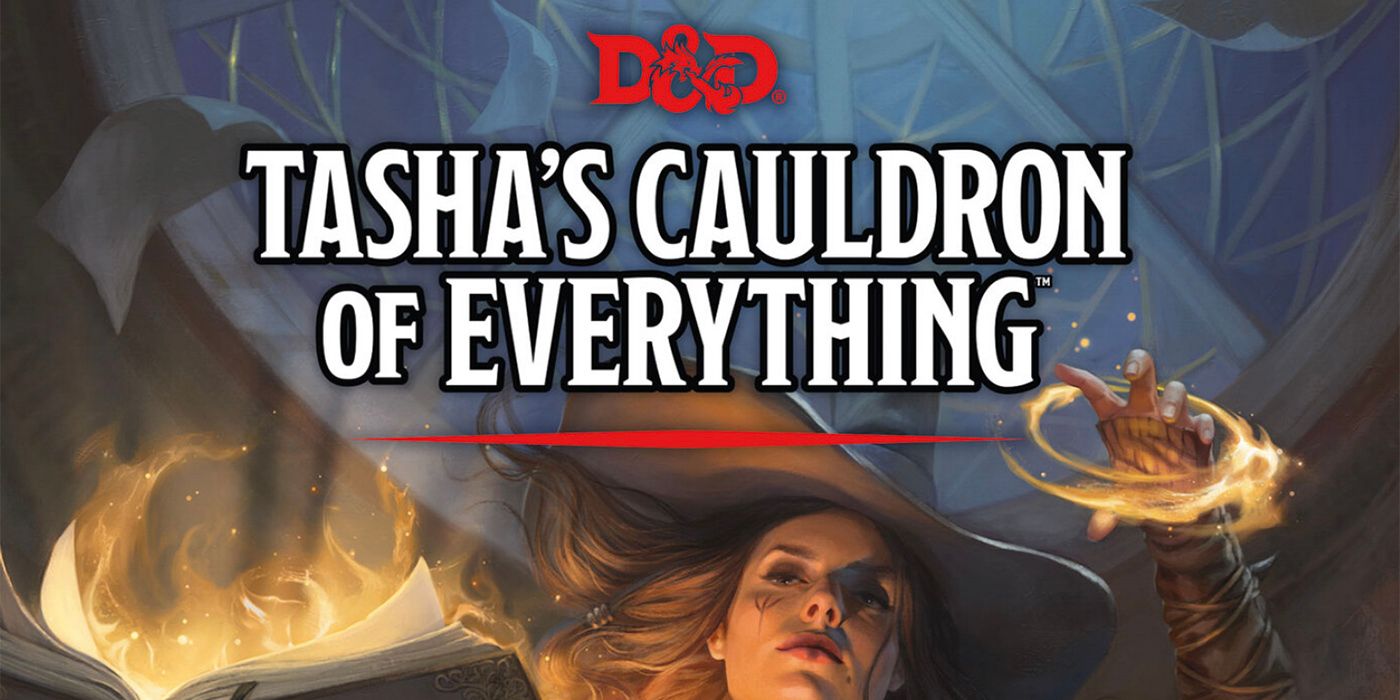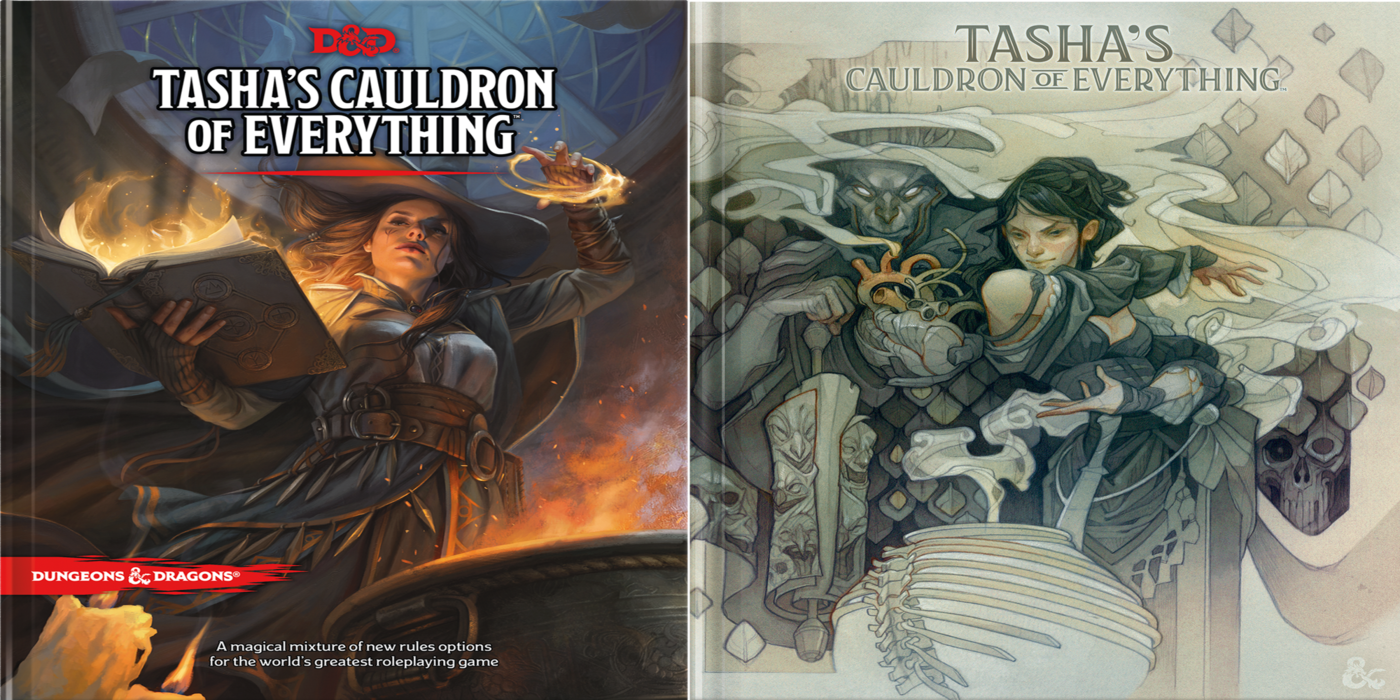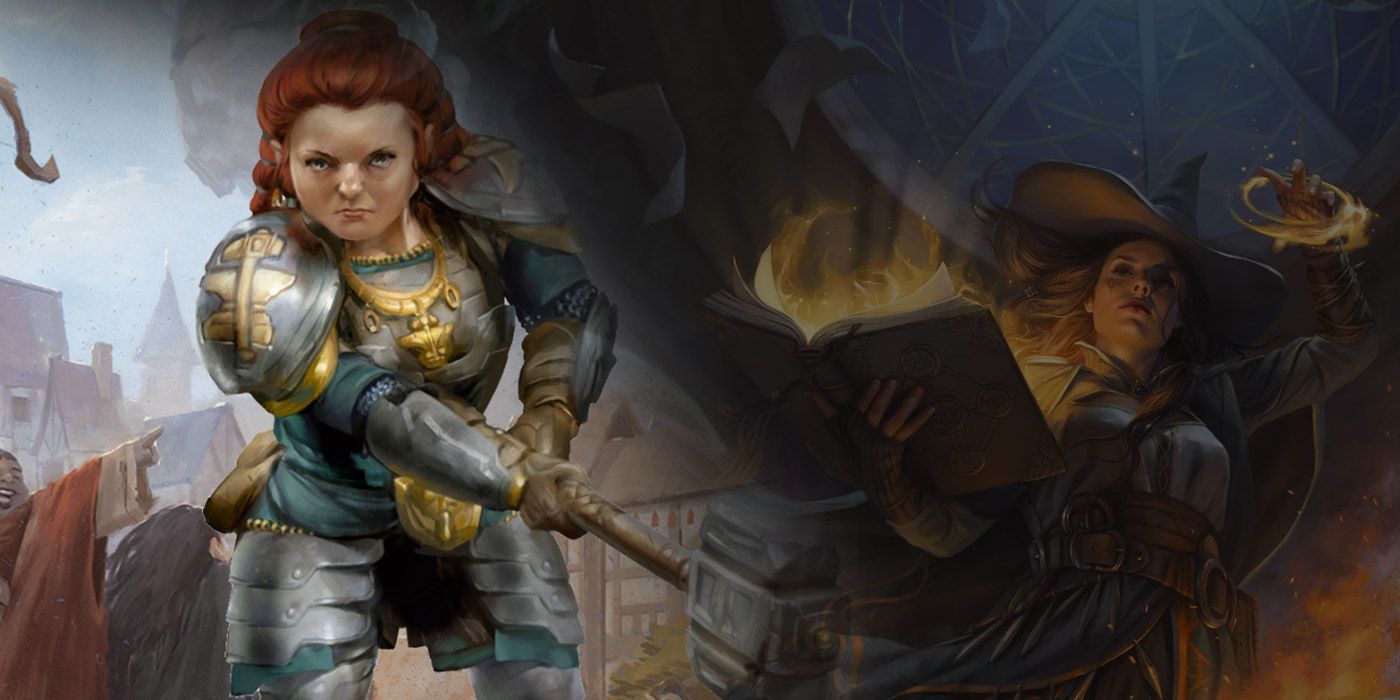While spontaneity is one of the more engaging and fun aspects of any good Dungeons and Dragons game, it can quickly devolve into an unmanageable mess of internal conflict, long gaps between actual play for ever-increasingly dissatisfied players, and a new DM left pulling out their hair. Luckily, there are some new tools available for use and inspiration in the newest addition to the core ruleset for Dungeons and Dragons' fifth edition.
Many have encountered events where, after something like a slippery rogue kills someone who is seemingly innocent, the party falls apart. Some of the group leave in disgust, some run to inform the authorities, and one other incredulously decides to stay and deflect any suspicions with the murderous rogue. As the party quickly splits into multiple distinct groups, the DM is left, mouth agape, wondering where it all went wrong. This story is all-too-familiar to even the most veteran Dungeon Masters in Dungeons and Dragons.
Tasha's Cauldron of Everything is the newest expansion for the fifth edition version of Dungeons and Dragons, and its 192 pages are packed with new tools for players and DMs alike. Players are treated to even more character option for Dungeons and Dragons, and DMs are gifted plenty of new magic items and some interesting new puzzles to add to their game. But one of the newer additions that stands out as a great tool for DMs looking to stabilize their party composition can be found in "Chapter 2: Group Patrons." It provides examples, templates, and inspiration for groups, organizations, or powerful individuals that might have employed or recruited the PCs as a whole.
Types of Group Patrons
The second chapter in Tasha's Cauldron of Everything outlines several types of organizations and then offers tools to help flesh them out. Each type of patron isn't tied to any type of character either, so the groups can incorporate any type of Player Character background or class.
- Academy - a school or association dedicated to magical study and the collection of knowledge. The PCs are granted special access to resources to aid them in their pursuit of their arcane and as they become more important members of the academy are responsible for more and more lofty magical works. The party doesn't need to be completely comprised of spellcasters either, as the academy would need competent bodyguards to protect their scholars as they adventure.
- Ancient Being - a powerful and incredibly old creature has sought out the party by trick or treatise to help exert their will on the world or serve as their eyes and ears in places the Ancient Being might not have time to visit. The creature has many demands for the party, but the boons it bestows can be bountiful.
- Aristocrat - an affluent noble has struck a bargain with the members of the party in order to help advance their career, spy on their rivals, or outright destroy their enemies. The Aristocrat brings the full weight of their wealth to bear, granting grand allowances to adventurers that remain loyal.
- Criminal Syndicate - the party has found themselves in the employ of an underground network of criminals. PCs are expected to carry out crimes of increasing scale as they navigate the seedy underbelly of a city or to carry out the whims of the Xanathar itself, but fortunately for the party, crime can definitely pay.
- Guild - the players fancy themselves professionals and as such have joined a guild, a mutually beneficial organization of merchants, craftsmen, or artisans. The guild pools together resources but only with others who can advance the guild's wealth, knowledge, or influence. A consortium of artificers might have employed the group to help discover new magical recipes or a group of merchants might have hired them to help protect trade routes.
- Military Force - if a DM's game calls for battles on a grand scale, the players might have all been conscripted into a military unit serving in a larger army. The benefits of being part of such a force are varied and glory comes to those who prove themselves on the battlefield, by sword or by spell.
- Religious Order - the characters act on behest of a higher power, serving as healers or hunters as befitting the order they serve. Peaceful DnD priests may have tasked the party with guarding the monastery or helping divine the meaning of some miraculous event, or a group of zealous vampire hunters train the party to help fight against the undead hordes. The players can gain many blessings by serving faithfully, but violating sacred law can result in being branded as apostates.
- Sovereign - higher on the social chain than the Aristocrat, a king or lord of a kingdom might have enormous resources to aid a group of adventurers that serve them with honor. A powerful Sovereign might hire the party to better train their retinue of knights, task them with slaying a Gnoll war band that is terrorizing the kingdom, or perhaps promise them riches if they can only help reclaim the stolen crown.
These templates are great jumping off points for creating a Group Patron in a campaign and can help DMs create truly memorable adventures.
What Makes Up the Group?
The players would need a reason to join the group, and the second chapter of TCoE lays out the framework and benefits of the different Group Patrons alongside tools to build an organization step-by-step. The different options help to flesh out and populate an organization in a way that's organic and makes sense to players. For example, it wouldn't make much sense to find a Dungeons and Dragons artificer working for a Religious Order obsessed with an ascetic way of life. Here's a quick summary of the components to build a Group Patron.
- Type - each Group Patron section includes a handy table of different types of organizations or individuals that might fill the role. For example: a criminal syndicate might be a loose affiliation of pirates, a tight-knit gang of DnD rogues, or a larger network of spies. And the different types of Sovereigns might include a despotic ruler hellbent on maintaining his rule or the deposed king who seeks to reclaim his throne.
- Perks - each kind of patron includes their own specific perks of service such as a guild's access to finer crafted goods or an aristocrat's political connections providing some leniency in the commission of a crime. Each section lays out the different perks bestowed by the different Group Patrons.
- Contacts - a new member of a military force wouldn't necessarily have the ear of its highest general as soon they join. The contact is the intermediary between the Player Characters and the leaders of the organization or the Sovereign themselves. The contact serves as the mouthpiece for the Patron and helps give your players the information and quests they need related to serving the Patron.
- Member Roles - each Group Patron has different ranks of member and they each have their own roles within the group. The adventurers can rise through these roles as they complete work for their Patron and each role has its own responsibilities. There are again handy tables the DM can roll on to randomly determine roles or serve as great foundations for homebrewing their own.
- Quests - the heart of the game itself, each Group Patron has their own kind of quests that Player Characters can embark on. The Guild needs precious materials recovered from a dangerous location, the Religious Order needs to root out a secretive cult, the Criminal Syndicate wants its agents to eliminate a competitor, TCoE offers a myriad of different quests for each Group Patron. These are a great way to help solidify the themes and setting of a Dungeons and Dragons' campaign in an organic way.
Why It Matters
Player choice is paramount to Dungeons and Dragons, as the players spend a lot of time customizing their DnD Character's feats, background, and playstyle. The Group Patron rules are a great way to help solidify a common goal for the party in the campaign without truly limiting player choice. The individual Player Characters are still free to make their own choices within the group, but they share a common direction. Doing anything so radical as to be ousted by the Patron would result in loss of very valuable perks that it can help rein in even the most stubborn rogue.
But more importantly, it helps keep the party together in a way that is natural and (most importantly) fun. There is still plenty of room for internal conflict, which can be a fun and engaging facet of a great DnD game, but the party has a reason to stay and adventure together.
Tasha's Cauldron of Everything is available now both in physical and digital format.




